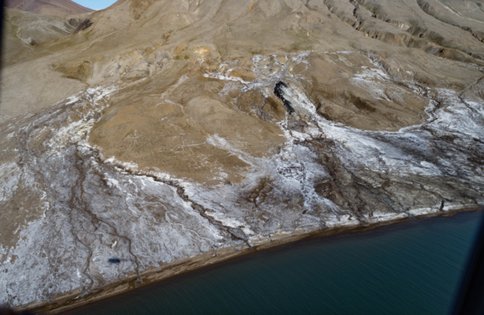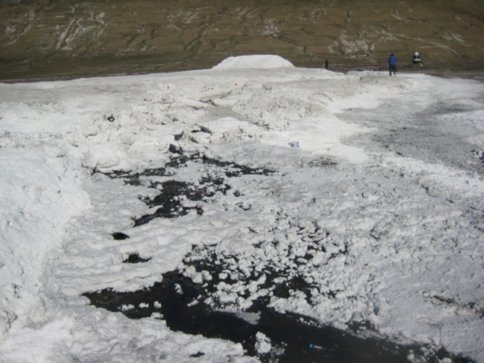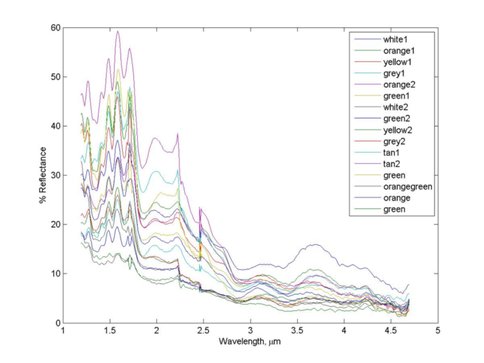2015 Annual Science Report
 SETI Institute
Reporting | JAN 2015 – DEC 2015
SETI Institute
Reporting | JAN 2015 – DEC 2015
Characterization of Habitability and Biosignature Preservation in Cold Springs
Project Summary
In an increasingly colder Mars where permafrost was thickening, mineralizing cold springs could have provided extant subsurface habitats and a means to transport evidence of subsurface life to the surface. Depending on conditions and geochemistry, these precipitates could have encapsulated a record of past life, and the residual remnants of such spring mounds could still be exposed at the martian surface. On Earth, high latitude spring systems are rare due to the relatively impermeable permafrost. However, several groups of perennial springs are located at Axel Heiberg Island in the Canadian High Arctic (~80°N). With mean annual air temperatures of -17°C and permafrost depths ≥ 600 meters, these springs flow throughout the year despite minimum air temperatures reaching <-50°C during winter. Thick residual icing pastes form as a result of evaporation, sublimation and freeze fractionation, the mineralogy being dominated by halite, hydrohalite, calcite, gypsum, elemental sulfur, thenardite, and mirabilite. These springs provide an environment where prokaryotes thrive despite extreme conditions and their presence suggests that such systems could have been present throughout Mars history, and activated during cyclical climate changes.The primary goal of this investigation is to evaluate the potential of spring deposits in regions with thick, continuous permafrost and define their taphonomic window and biogeological context. Samples of icing pastes, travertine and other mineral precipitates have been sampled to understand the relationships between geochemistry, environment, presence of biosignatures and their potential preservation.
Project Progress
Initial field investigations for this project were carried out in July 2015 at three perennial springs sites and one paleo-spring site located at Axel Heiberg Island in the Canadian High Arctic.

Working from the McGill Arctic Research Station (M.A.R.S.) which has a long history of supporting science in this remote region (Pollard et al. 2009), Dale Andersen and Pablo Sobron had a goal of conducting in situ measurements using IR and Raman spectroscopy, collecting samples of sediments and mineral precipitates for additional laboratory-based studies and collecting environmental data for context. Studies were undertaken at Gypsum Hill springs, Colour Peak springs, Wolf Diapir springs and a paleo-spring deposit near the White Glacier. Concurrent with sampling, they deployed a Raman spectrometer and an IR reflectance spectrometer at all four locations, recording 100+ Raman spectra and 50+ IR reflectance spectra at each of the sites.
They identified gypsum, iron sulfates, kerogens, elemental sulfur, organics, halite, hydrated, iron sulfates, and thenardite. We observed transformation during transport field-to-camp (dehydration/hydration, possible oxidation). We are currently refining the interpretation of the Raman and IR data, and exploring correlation of IR data with ASTER and Hyperion orbital data. In 2016 we will share samples with members of the NAI team who will perform additional lab characterizations (ESEM, XRD, XRD, LIBS).
-
PROJECT INVESTIGATORS:
-
PROJECT MEMBERS:
Pablo Sobrón
Co-Investigator
Wayne Pollard
Collaborator
-
RELATED OBJECTIVES:
Objective 2.1
Mars exploration.
Objective 4.1
Earth's early biosphere.
Objective 7.1
Biosignatures to be sought in Solar System materials





